Trawniki Labour Camp and SS Training Camp
A sugar plant and a railway station was built in Trawniki, which is some 40km east of Lublin., at the end of the nineteenth century. This gave rise to the development of a settlement.
Before the Second World War the sugar plant was adapted for military purposes within the framework of the Central Industrial District. Trawniki was inhabited by Poles and some 100 Jewish traders and craftsmen who belonged to the Jewish congregation located in Biskupice.
|
Because Trawniki was located with good railway connections in 1941 the Germans established a Prisoner of War camp on the premises of the sugar plant for Soviet and Polish soldiers. Most of them died or were murdered before the end of the year.
The Germans selected from the Soviet Prisoners of War a number of volunteers to serve in the SS, as members of guard companies, undertaking such work as guarding the ghettos, transport duty taking the Jews to the death camps, or service in one of the three Aktion Reinhard death camps, Belzec, Sobibor and Treblinka.
Those selected were trained at the SS Training camp at Trawniki which was located in the sugar factory complex under the command of SS- Sturmbannfuhrer Streibel, who was born on 11 October 1903 in Neustadt..
In March / April 1942 Trawniki became a transit station for Jews who were transported to the Belzec death camp from various ghettos in the Lublin district, and from abroad.
On 23 March 1942 2500 Jews from Piaski, Biskupice, and Trawniki were gathered in the sugar plant before they were sent to imminent death in Belzec.
This event coincided with the establishment of a labour camp for selected Jews – Germans, Slovaks, Czechs and Poles, whose task was to segregate the personal property of those who were murdered in Belzec and Sobibor.
During February 1943 the German firm Schultz, a fur and brushes producing establishment was relocated from the Warsaw ghetto to Trawniki, along with its Jewish workers.
Some of the Jews captured in the Warsaw ghetto uprising were sent to Trawniki, including Emanuel Ringelblum, who was later smuggled out of the camp, and he returned to Warsaw and went into hiding in the “Ayran” part of the city.
|
The labour camp was liquidated on 3 November 1943 under the Aktion Erntefest. On 3 November 1943 the camp was surrounded by Waffen –SS and police units.
Early in the morning the Jews were driven from their barracks and taken in batches to the training camp of the SS auxiliaries in Trawniki. There they were forced to undress, put their clothes in a huge heap, and enter the trench, where they were shot. Those who arrived subsequently were forced to lie on the corpses that had been shot before.
When there was no more room in the trench in the training camp, some of the Jews were shot in the sand or in a gravel pit in the labour camp. To overcome the cries of the victims and the noise of the shooting, loudspeakers were installed in the camp and music was heard throughout the entire area.
By late afternoon the murder action was completed –all the Jews had been shot and the few Jews who had succeeded in escaping from the shooting site had been caught and shot.
A German manager of the Schultz’s enterprises in Trawniki , Kurt Ziemann testified about the events on the morning of 3 November 1943:
Shaking hands with the troops |
The labour camp was surrounded. As we found out later, there was an entire SS battalion – young SS men from the Waffen-SS. Ee were asked to come to the headquarters of the training camp. The commander of the Waffen- SS unit announced to us that the enterprise would not be operational that day.
We could see that the Jews were taken in groups from the labour camp to the training camp. There they had to undress and put their clothes in a huge heap.
Everything was done at a run. I could not see the execution place from where I was standing. The nude Jews disappeared behind a barrack. We merely heard the shooting.
The next morning I went to Warsaw for 3-5 days. When I returned, already at the station I could smell the odor of the corpses that had been cremated.
Near the former Kommandantur, where the bodies were cremated, there is an obelisk monument commemorating the Jews who were murdered at Trawniki.
Sources:
From Lublin to Belzec –Traces of Jewish Presence in South Eastern Part of the Lublin region by Robert Kuwalek published by AD REM Lublin 2006
Belzec, Sobibor Treblinka by Yitzhak Arad published by Indiana University Press – Bloomington and Indianapolis 1987
The Holocaust by Sir Martin Gilbert – published by Collins, London 1986
The Camp Men by French L Maclean – published by Schiffer Military History Atglen PA 1999
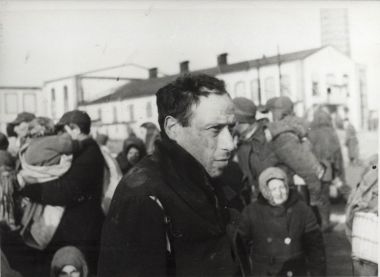

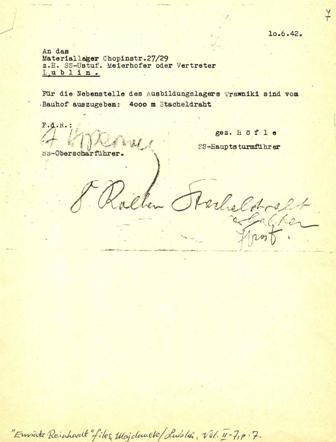
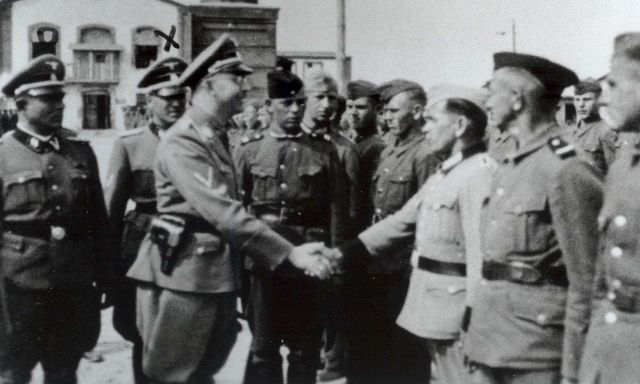
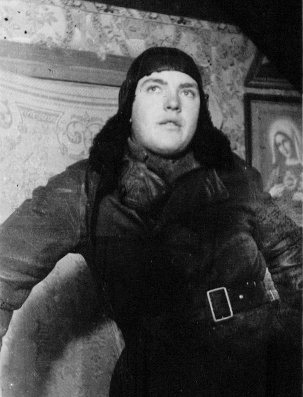
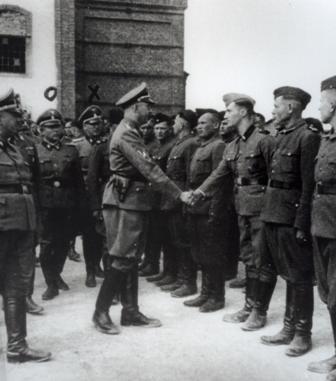
No comments:
Post a Comment